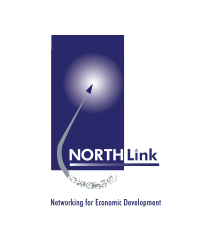New Melbourne’s North Regional Investment Strategy and Prospectus:
Infrastructure investment needed to fulfil potential of Melbourne’s North
Melbourne’s North is growing rapidly with enormous investment potential but requires increased infrastructure spending by State and Federal Governments, according to a new report.
The Melbourne’s North Regional Investment Strategy and Prospectus was developed by the economics consultancy team of Arup in conjunction with NORTH Link and its key stakeholders.
The report finds that Melbourne’s North has a number of key economic and lifestyle advantages:
- Strong economic growth – output of $40 billion per annum, growing by 4.7 per cent per annum
- Strong business formation rates – 75,000 local businesses, with 5,000 new businesses being added each year
- Rapid population growth – home to one million residents, with an annual population growth of 2.8% per annum (compared to the national average of 1.6%). Region’s population will increase by nearly 40 per cent between 2016 and 2031 and overtake Adelaide
- Well located – geographic centre (Cnr of Hume Freeway and Metropolitan Ring Road, Thomastown) is close to CBD (27 minutes), Melbourne Airport (13 minutes), Port of Melbourne (20 minutes)
- Low cost of non-residential land ($1,203 per square metre) as opposed to $1,316 for Melbourne’s South and $1,275 for Melbourne’s West
- Competitive office rentals ($300 per square metre) as opposed to St Kilda Rd ($400) and CBD A Grade ($545)
- Industry transition – enterprises making transition from traditional manufacturing to advanced manufacturing, services and knowledge industries, with manufacturing sub-sectors such as caravan and food and beverage manufacturing growing
- Start-up culture and ecosystem – two established incubator networks that have created thousands of jobs; strong representation of social enterprises
- Strong skills and education base – two prominent universities and two significant TAFEs with campuses in region; strong trades and professional skills base
- Strong health and community services sector – the largest workforce by industry, anchored by three strong health clusters and a number of private hospitals
- Key freight and logistics assets – including Melbourne Airport, Melbourne Wholesale Market and access via Hume and Calder Freeways and Metropolitan Ring Road
- Tourism assets – heritage arts culture, historic sites, picturesque hill country, food and wine culture and creative arts, underpinned by Airport and international student presence
“The Arup report, which was supported with National Institute of Economic and Industry Research data, also finds that Melbourne’s North has been historically underinvested in public and private infrastructure compared to the rest of Melbourne as a whole”, says NORTH Link Executive Director Chris James.
“Faster-than-expected population and industry growth requires infrastructure planning and build to be brought forward. In response, the report recommends a commitment by State and Federal Governments to the following infrastructure projects, some of which are planned already:
- Vacant land (51 hectares) next to Melbourne Market to be dedicated to a food manufacturing, distribution and research hub to anchor food and beverage jobs in Melbourne’s North
- North East Link – close the missing link in Melbourne’s North East; improve freight efficiency
- Outer Metropolitan Ring Road – bring forward in response to faster-than expected population growth in Outer North
- Intermodal freight hubs – commit to Intermodal Freight Terminals (Somerton and Beveridge) to improve freight movements to and from the Port of Melbourne and improve the operation of the proposed Inland Rail
- Airport Rail Link – build rail link with focus on access to the Airport from Melbourne’s North – in the longer term, North can be linked by Suburban Rail Loop; shorter term –buses
- La Trobe University City of the Future as part of the La Trobe National Employment Cluster
- Arts and Culture Audit for Melbourne’s North to examine capital investment to leverage its latent visitor economy
- Precinct development – focus on co-ordinated development of key precincts as job hubs
- Start up culture – development of further incubator networks in growing Outer North and capital works on existing incubators in Inner North
- Energy – support to co-ordinate aggregation of demand to reduce price
- Digital infrastructure – support to facilitate high speed broadband telecommunications to underpin advanced manufacturing and knowledge industries
The report also found that key current and future growth industries and clusters in the North should be encouraged by Commonwealth and State Governments, as follows:
- Food and beverage manufacturing and supply chain
- Agritech and foodtech
- Freight and logistics
- Health and wellbeing
- Advanced manufacturing
- Visitor economy
- Digital economy and professional services
“Overall, Melbourne’s North has a bright economic future – however, a co-ordinated focus is required on infrastructure, investment, industry and skills policy is required to ensure this comes to pass”, says Mr James.
“This Investment Attraction Strategy sets a clear path for Melbourne’s North to realise its economic potential. The combination of available land and population growth together with committed infrastructure investment gives the region a compelling value proposition to attract additional investment” says Arup’s Cities Leader for Victoria/South Australia Justin Madden.
Media Contact
Chris James, NORTH Link
(03) 9479 3336, (0417) 353-650

